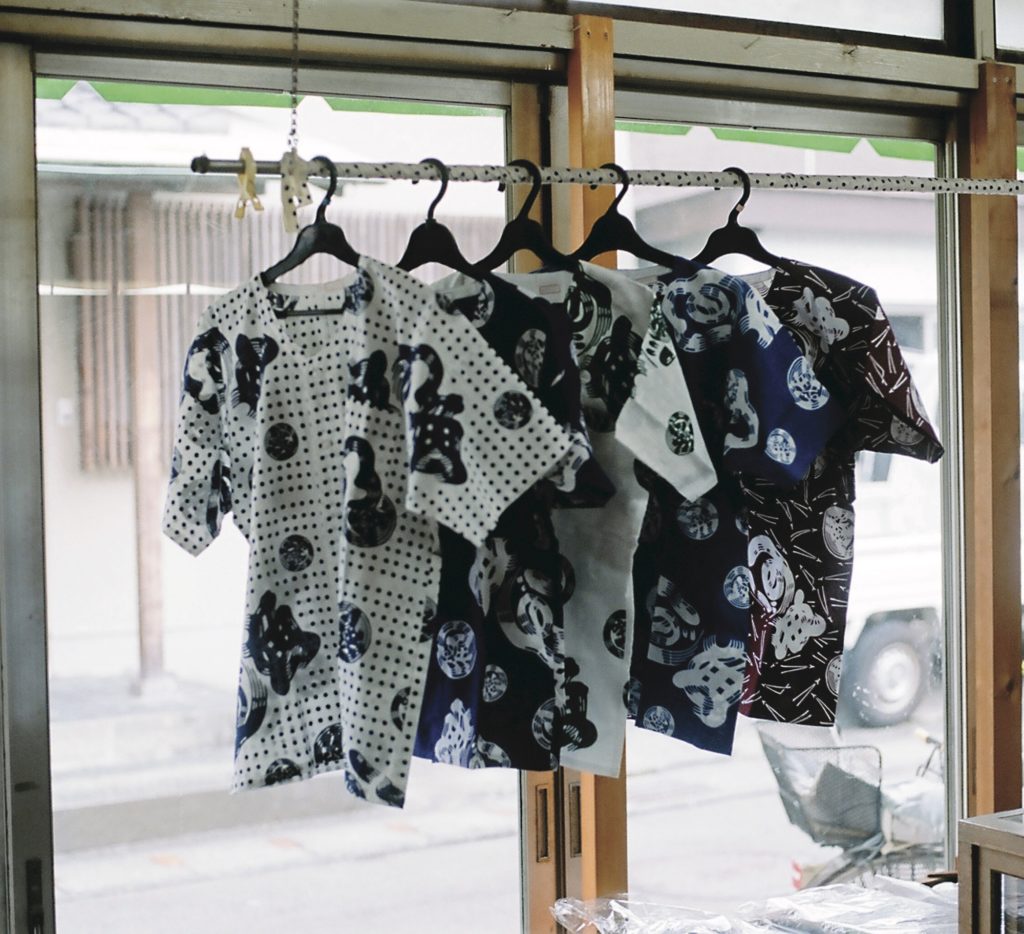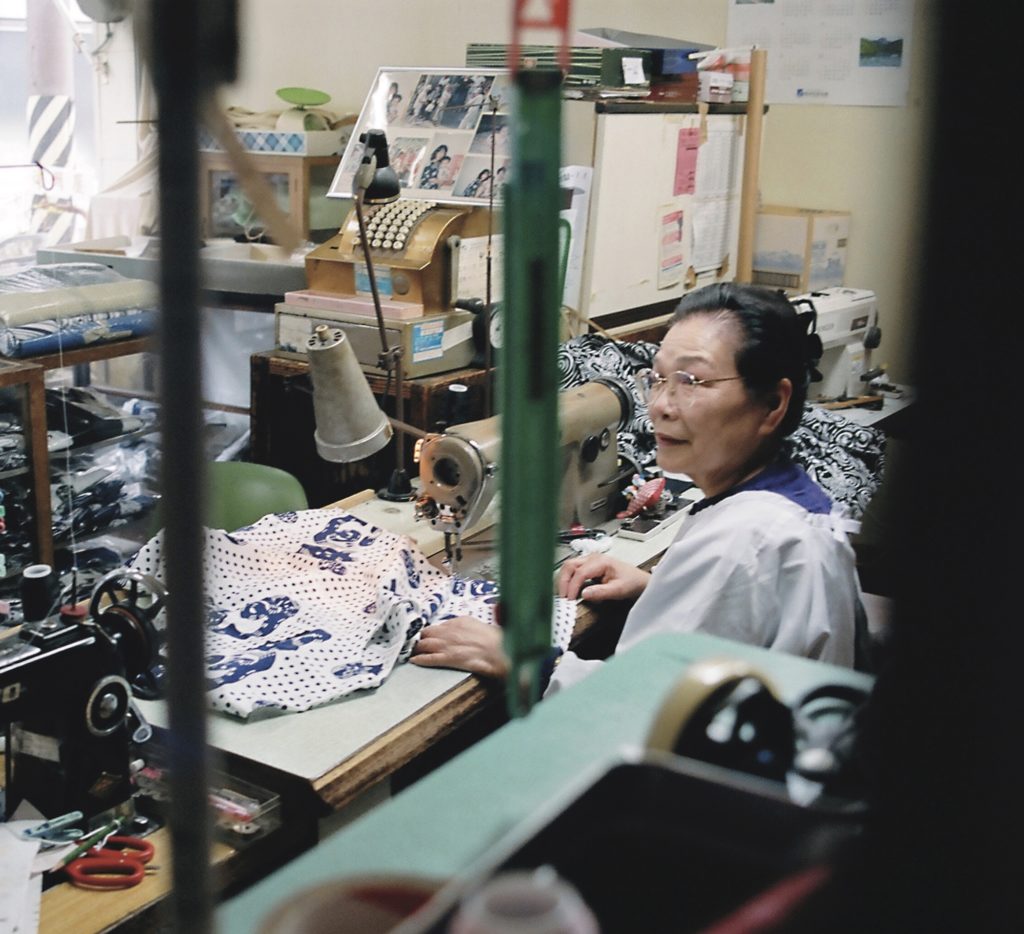
Story 01 | Shirts for Fishing
Everything is packed away inside Enshuya, which is understandable- it’s winter. Through the sliding doors and vintage sewing machines (the Yashima for making button holes, and the Juki for sewing) rest on wooden tables, half hidden by the glass cabinets packed with cotton shirts. Kiyo Naito appears from a back room and darts over to greet us, sitting herself behind one of the metal sewing machines. She is now 86 years old, only four years younger than her shop, Enshuya. Naito is responsible for creating Yaizu’s most distinctive icon by hand, intricately patterned fishing shirts known as ‘u-o-gashi’.
“I started making these shirts, when I came to this house as a wife,” says Naito under fluorescent lights. “I was eighteen then, it was during the war.” She recalls her husband being dropped off in China while his friends went onto fight further afield. Only her husband returned. Everyone has either lost someone at sea, or knows someone who has. And then there was the infamous Bikini Atoll incident. Its understandable that “all the designs are happy.”
Naito points to a hanging cotton shirt “Pine needles, a symbol of happiness, but there are also lots of fish.” She gestures around the room, fish characters, shapes and symbols are embedded into every shirt.
Only true fishermen wore the shirts at first. It was a mark of pride, but perhaps it was also something to fortify their mortality. Now even the local bank wear matching u-o-gashi shirts every friday and Japanese tourists come from all over to buy one; the whole nation paying it’s respect, in cotton, to Yaizu’s former life as the fishing capital of Japan.
Naito moves nimbly to stop us as we leave, she has more designs to show us. It seems impossible for her to be so old; other local residents are equally astounded of how ‘genki’ or energetic, she is. “In the summer we are always working,” she says, because everything is made by hand. As we exited we thought it’s hard to imagine something so full of life ever losing its power.
< From Papersky no.32(2010) >












